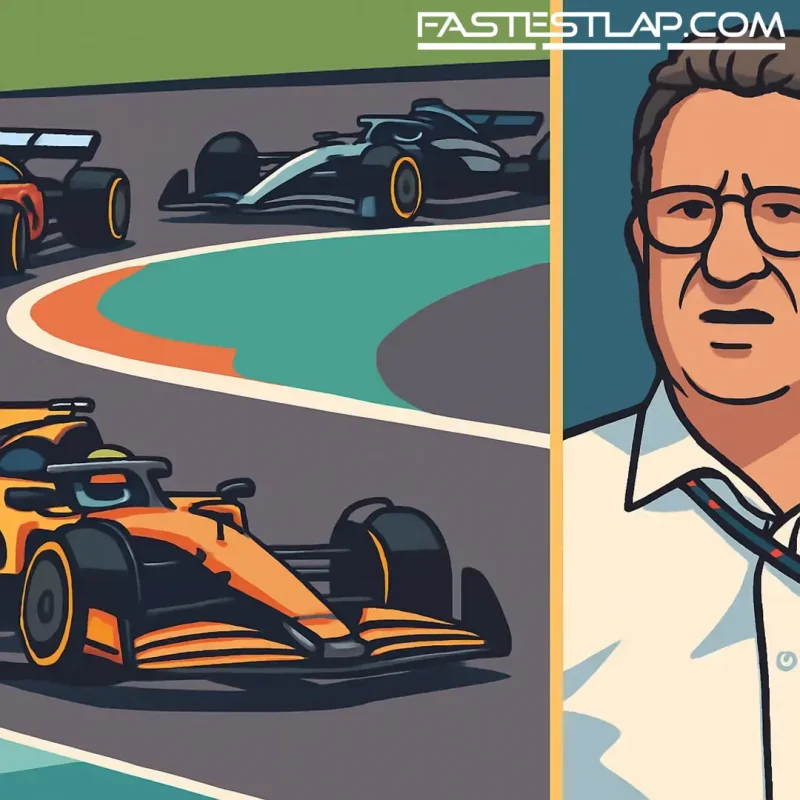Tombazis swats away 400 km/h talk as FIA fine‑tunes F1’s 2026 reset
If you were getting comfy with the idea of 400 km/h bombs down Monza’s pit straight next year, Nikolas Tombazis has a message: not happening.
The FIA’s single-seater technical chief has cooled the latest round of top-speed hysteria sparked by Toto Wolff’s suggestion that, in a certain deployment scenario, the 2026 cars could “scratch the 400 km/h limit.” It was classic Wolff—part provocation, part sales pitch for the new power units—and it certainly did the job of getting the paddock chatting.
“I can assure you there won’t be speeds of 400 km/h,” Tombazis said, drawing a firm line under the claim. The reasoning isn’t philosophical, it’s regulatory: the 2026 cars will run under tightly defined energy management rules that simply won’t allow that kind of single-shot, video-game deployment. And if someone ever found a loophole? “We have a strong card to play if necessary, and that is for safety reasons,” he added. In short: the FIA can and will step in.
Wolff’s scenario was a theoretical one—dump all hybrid energy on one long straight, forget the rest of the lap—and even the drivers played it for laughs. “Maybe Toto’s engine will reach that,” Max Verstappen quipped. Carlos Sainz, who’s sampled a Mercedes-powered Williams in the sim, downplayed it too: HPP “must be doing a good job,” he smiled, but 400? He didn’t hit it.
Beyond the headline figure, Tombazis outlined the real priorities of the 2026 ruleset, which brings the most radical shift since the hybrid era began in 2014. The architecture stays 1.6-litre V6, but the split between combustion and hybrid power moves closer to 50/50, sustainable fuels come in, and active aerodynamics return to Formula 1 for the first time in decades.
That cocktail is complicated, and nobody is pretending otherwise. Drivers have already shared some early misgivings from simulator runs—odd deployment characteristics here, unnatural balance there. Tombazis isn’t surprised. “If you have more electrical and less combustion power, you are adding a level of complication in the management,” he said. The FIA’s job in these final months is to sand down the rough edges: make sure the cars feel natural to drive, that the hybrid and ICE phases blend intuitively, and that drivers aren’t juggling energy maps more than they’re exploiting talent.
Two big points stand out from the FIA’s side. First, expect volatility at the start. New regulations always widen the competitive spread until teams converge. Second, don’t assume anyone has the full picture yet—least of all the governing body. The FIA doesn’t have privileged access to team wind tunnel numbers or engine dyno figures. Much of what you’ve heard so far is educated guesswork from teams and suppliers, filtered through the imperfect lens of simulation.
What is set, roughly, is the timeline. Pre-season running is pencilled in for January at Barcelona, and the first proper laps of the 2026 machinery are set to happen behind closed doors—no grand unveil, just engineers and lap data. Between now and then, the feedback loop is tight. Teams are ramping up sim mileage, sending findings back to the FIA, and seeing tweaks come the other way as the rulebook is refined. It’s iterative and, yes, a little messy by design.
There’s also the matter of pace. New tech, new aero modes, extra electrical complexity—does that mean slower cars? Initially, yes, and intentionally so. Tombazis made the point bluntly: if every fresh ruleset made cars faster than the ones they replaced, F1’s speed curve would be unsustainable from a safety and circuit-compatibility standpoint. That context helps explain some of the driver grumbling; get out of a 2025 car and into an early 2026 sim model, and you’re not going to say “wow” on lap time alone. The FIA’s counter is that what drivers tried months ago has already evolved, and will keep evolving until the shakedown.
As for the 400 km/h chatter, file it under pre-season theatre. The 2026 cars will be quick enough, and the tech will be ambitious enough, without needing shock-and-awe top speeds. Energy rules will cap the fireworks, active aero will reshape how cars attack straights and corners, and the power split will demand a different kind of racecraft. That’s more interesting than a number on a speed trap.
The real plot worth watching? Which teams nail the compromises fastest, how quickly the field compresses, and whether the FIA’s “natural feel” mantra holds when the lights go out. For now, Tombazis is keeping the sport pointed at that target—and away from the marketing-friendly fantasy of 400 clicks on the boards.




